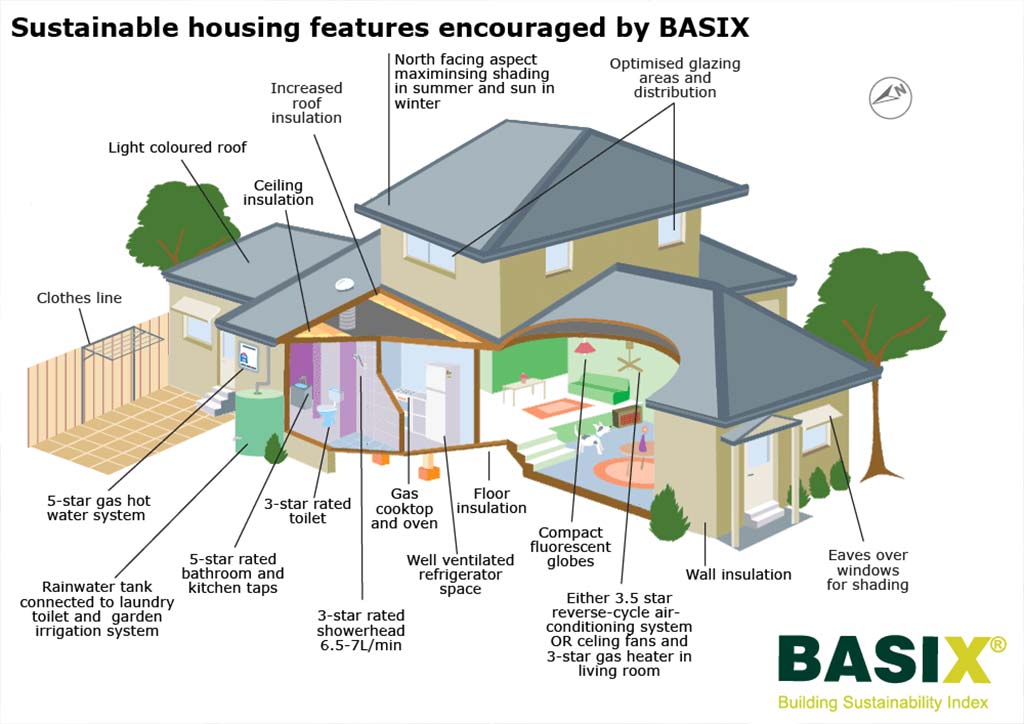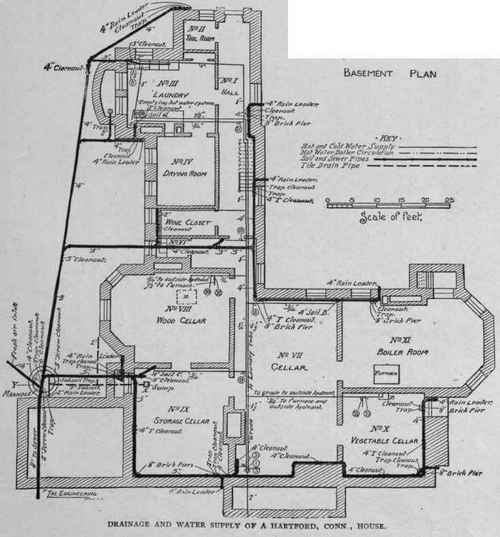Anatomy of Your Home's Plumbing System: How It Matters
Anatomy of Your Home's Plumbing System: How It Matters
Blog Article
In this article down the page you will find additional quality expertise related to The Inner Workings of Your Home's Plumbing.

Recognizing exactly how your home's plumbing system works is important for every homeowner. From supplying clean water for drinking, food preparation, and showering to securely getting rid of wastewater, a properly maintained plumbing system is crucial for your family members's wellness and comfort. In this comprehensive guide, we'll explore the elaborate network that composes your home's plumbing and deal pointers on upkeep, upgrades, and handling usual issues.
Intro
Your home's pipes system is greater than simply a network of pipes; it's a complicated system that guarantees you have access to clean water and efficient wastewater elimination. Knowing its components and just how they interact can aid you stop expensive repairs and make certain every little thing runs efficiently.
Fundamental Parts of a Plumbing System
Pipelines and Tubing
At the heart of your plumbing system are the pipelines and tubes that carry water throughout your home. These can be made from various materials such as copper, PVC, or PEX, each with its benefits in terms of longevity and cost-effectiveness.
Fixtures: Sinks, Toilets, Showers, etc.
Components like sinks, bathrooms, showers, and tubs are where water is utilized in your house. Understanding how these components attach to the plumbing system assists in identifying problems and intending upgrades.
Valves and Shut-off Factors
Shutoffs regulate the flow of water in your pipes system. Shut-off valves are vital during emergency situations or when you need to make repairs, permitting you to separate parts of the system without interrupting water circulation to the whole residence.
Supply Of Water System
Key Water Line
The primary water line attaches your home to the community water or an exclusive well. It's where water enters your home and is distributed to various fixtures.
Water Meter and Pressure Regulator
The water meter actions your water use, while a pressure regulatory authority guarantees that water streams at a safe pressure throughout your home's pipes system, protecting against damages to pipelines and fixtures.
Cold Water vs. Warm water Lines
Understanding the distinction between cold water lines, which provide water directly from the major, and hot water lines, which lug warmed water from the water heater, helps in repairing and planning for upgrades.
Drainage System
Drain Pipeline and Traps
Drain pipes bring wastewater far from sinks, showers, and toilets to the drain or septic system. Traps stop sewage system gases from entering your home and also trap debris that can trigger obstructions.
Ventilation Pipelines
Ventilation pipes allow air into the drain system, preventing suction that might slow drainage and trigger catches to vacant. Appropriate air flow is essential for maintaining the honesty of your plumbing system.
Importance of Proper Drainage
Ensuring appropriate drain prevents backups and water damages. Routinely cleaning drains pipes and preserving traps can protect against pricey repair work and prolong the life of your plumbing system.
Water Heater
Kinds Of Hot Water Heater
Hot water heater can be tankless or traditional tank-style. Tankless heating systems heat water on demand, while storage tanks store warmed water for immediate use.
Upgrading Your Pipes System
Factors for Updating
Updating to water-efficient fixtures or changing old pipes can enhance water top quality, reduce water bills, and enhance the value of your home.
Modern Plumbing Technologies and Their Benefits
Explore technologies like clever leakage detectors, water-saving bathrooms, and energy-efficient water heaters that can conserve money and lower environmental influence.
Expense Factors To Consider and ROI
Determine the ahead of time expenses versus lasting cost savings when thinking about pipes upgrades. Many upgrades pay for themselves through lowered energy costs and less repairs.
Just How Water Heaters Attach to the Plumbing System
Comprehending exactly how hot water heater attach to both the cold water supply and warm water distribution lines assists in diagnosing problems like inadequate hot water or leakages.
Upkeep Tips for Water Heaters
On a regular basis flushing your water heater to remove sediment, examining the temperature settings, and evaluating for leakages can extend its life-span and boost energy performance.
Common Pipes Problems
Leakages and Their Causes
Leakages can take place because of maturing pipes, loose fittings, or high water stress. Attending to leakages without delay stops water damages and mold and mildew development.
Blockages and Blockages
Blockages in drains and toilets are frequently brought on by purging non-flushable items or a build-up of oil and hair. Using drainpipe displays and bearing in mind what goes down your drains can prevent obstructions.
Signs of Plumbing Issues to Expect
Low tide pressure, slow drains pipes, foul odors, or unusually high water costs are signs of potential pipes issues that need to be addressed without delay.
Plumbing Maintenance Tips
Routine Evaluations and Checks
Set up yearly plumbing evaluations to capture issues early. Look for indicators of leaks, corrosion, or mineral buildup in faucets and showerheads.
Do It Yourself Upkeep Tasks
Simple jobs like cleansing faucet aerators, looking for toilet leakages utilizing dye tablet computers, or insulating revealed pipelines in chilly environments can stop major plumbing concerns.
When to Call a Specialist Plumber
Know when a plumbing problem calls for professional competence. Attempting complex fixings without proper knowledge can result in even more damages and greater repair costs.
Tips for Decreasing Water Use
Easy practices like repairing leaks without delay, taking much shorter showers, and running complete tons of washing and dishes can conserve water and lower your utility expenses.
Eco-Friendly Pipes Options
Consider lasting plumbing products like bamboo for flooring, which is durable and environmentally friendly, or recycled glass for kitchen counters.
Emergency Readiness
Steps to Take During a Plumbing Emergency
Know where your shut-off valves lie and exactly how to turn off the water in case of a burst pipe or major leakage.
Significance of Having Emergency Contacts Helpful
Maintain contact info for regional plumbers or emergency services readily offered for fast reaction throughout a plumbing situation.
Ecological Effect and Conservation
Water-Saving Components and Appliances
Installing low-flow taps, showerheads, and toilets can substantially minimize water use without sacrificing performance.
Do It Yourself Emergency Situation Fixes (When Applicable).
Short-term repairs like utilizing air duct tape to spot a dripping pipeline or positioning a container under a trickling tap can reduce damage until a specialist plumbing shows up.
Conclusion.
Comprehending the makeup of your home's pipes system empowers you to keep it successfully, saving money and time on repair services. By complying with routine upkeep routines and remaining informed concerning contemporary pipes innovations, you can ensure your pipes system runs efficiently for several years to come.
Understanding Your Home Plumbing System: A Comprehensive Guide
Plumbing System: The Lifeline of Your Home
At its core, the plumbing system is designed to perform two primary functions: bring fresh water into your home and remove wastewater. The system is a network of pipes, fixtures, and other components that transport water and sewage. Residential plumbing systems include potable water supply lines, drain-waste-vent (DWV) systems, and various plumbing fixtures that make water use in daily tasks possible.
Key Components:
Water Supply: This part of your plumbing system brings municipal water into your home, passing through the main water supply line. It s responsible for supplying all water needs, from drinking to bathing.
Drainage System: It carries waste and water away from your home to the sewer or septic system. This system includes all the piping within your home that leads to external sewage or septic systems.
Vent System: An essential yet often overlooked component, the vent system allows sewer gases to escape and lets air into the drainpipes, ensuring water and waste move correctly through the system.
Fixture: More Than Just Taps and Toilets
Plumbing fixtures are the most interactive parts of the plumbing system, including faucets, showers, toilets, and sinks. Each fixture is connected to the plumbing system and plays a role in either the delivery of freshwater or the disposal of waste and wastewater.
Types of Fixtures:
Faucets and Sinks: Used for washing hands, dishes, and other daily water needs. Toilets: Dispose of human waste through the sewage system. Bathtubs and Showers: Provide bathing facilities, requiring both hot and cold water supply. Water Supply: The Source of Life
The water supply system is a critical component, ensuring that potable water is available throughout your home for various uses, including drinking, cooking, and cleaning. This system consists of pipes that distribute water to different parts of the house, controlled by valves to regulate the water flow.
Types of Plumbing: Materials and Methods
Various types of plumbing systems and materials are used in residential settings, each with its advantages and applications. From copper and PVC pipes for water supply to cast iron and ABS for drainage, the choice of materials can impact the longevity and efficiency of your plumbing system.
https://intownplumbingtx.com/articles/home-plumbing-system-guide/

As a serious person who reads on Plumbing Installation 101: All You Need to Know, I think sharing that post was worth the trouble. Make sure you take a moment to share this write-up if you enjoyed it. Thank you for going through it.
About Report this page